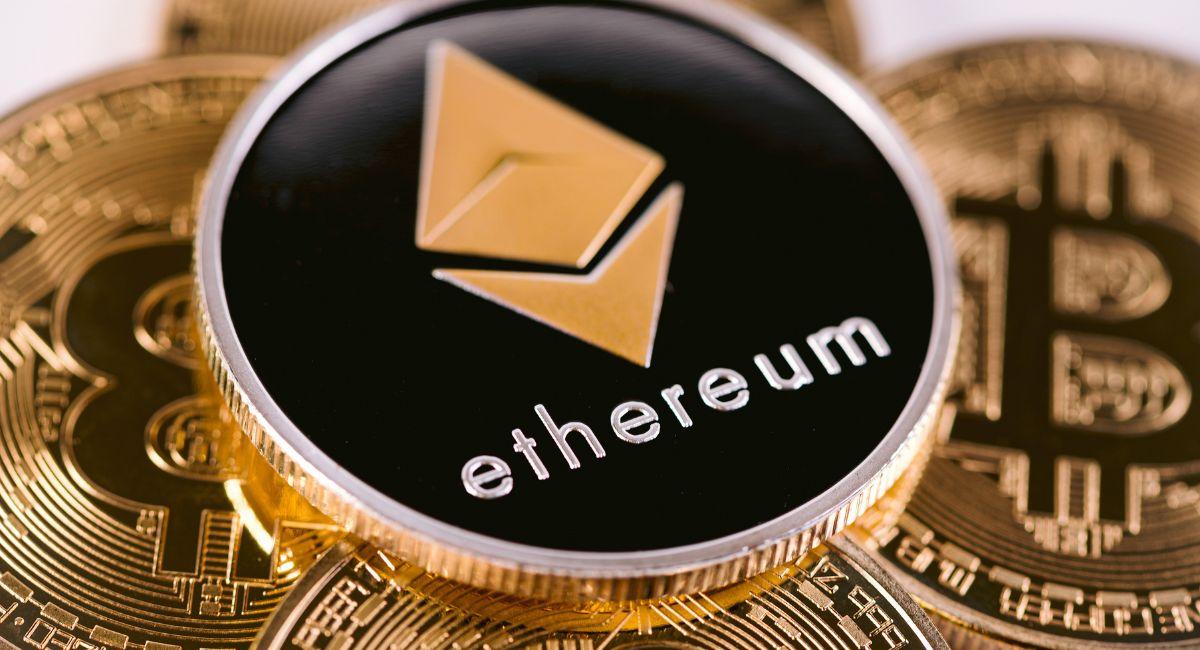Top 9 Complex Interplay Between EIPs And ERCs And The Urgent Need For Them

In the expansive realm of blockchain technology, Ethereum has emerged as a powerhouse, providing a platform for decentralized applications (DApps) and smart contracts. Two crucial components driving Ethereum’s evolution are Ethereum Improvement Proposals (EIPs) and Ethereum Request for Comments (ERCs). In this comprehensive exploration, we will delve into the significance of EIPs and ERCs, unraveling their roles in shaping Ethereum’s ecosystem and understanding the intricate connection between them.
Ethereum Improvement Proposals (EIPs):

- Formal Documentation:
- Like BIPs for Bitcoin, EIPs are formal documents that provide detailed information about proposed changes to the Ethereum protocol. These documents serve as a reference for developers, stakeholders, and the broader community.
- Diverse Proposals:
- EIPs cover a wide range of proposals, including changes to the Ethereum Virtual Machine (EVM), modifications to consensus rules, improvements in smart contract standards, and the introduction of new features or functionalities.
- Decentralized Governance:
- EIPs play a central role in the decentralized governance of the Ethereum network. The process allows anyone to submit a proposal, enabling a diverse set of contributors to participate in shaping the future of Ethereum.
- EIP Standards:
- Similar to Bitcoin’s BIP standards, Ethereum has its own standards. For instance, ERC (Ethereum Request for Comments) describes a set of rules and guidelines for proposing and developing standards within the Ethereum ecosystem. Examples include ERC-20 (token standard) and ERC-721 (non-fungible token standard).
- EIP Categories:
- EIPs are categorized into three types:
- Core EIPs (Core Improvements): Fundamental changes to the Ethereum protocol.
- Networking EIPs: Proposals related to network upgrades and improvements.
- Interface EIPs: Standards and conventions for the Ethereum user interface and developer experience.
- EIPs are categorized into three types:
- EIP Editors:
- EIPs go through a review process facilitated by EIP editors. These individuals, often experienced developers and contributors to the Ethereum community, help maintain the quality and consistency of the proposals.
- Community Review:
- Similar to BIPs, EIPs undergo community review. This involves discussions, debates, and feedback from developers, stakeholders, and community members. This open review process ensures a broad spectrum of perspectives is considered before implementation.
- Implementation and Testnets:
- Once an EIP gains community consensus, the proposed changes are implemented in Ethereum clients. Testnets are frequently used to test the proposed upgrades in a controlled environment before they are deployed on the mainnet.
- Hard Forks:
- Some EIPs, particularly those involving significant changes to the protocol, may require a network upgrade or hard fork. Hard forks are coordinated events during which the entire network transitions to the upgraded version.
- Post-Activation Monitoring:
- After an EIP is activated on the Ethereum mainnet, the network is closely monitored for any unexpected issues or vulnerabilities. Ongoing maintenance and updates may be required to address emerging challenges.
EIPs are integral to Ethereum’s evolution, ensuring that the platform remains dynamic, secure, and responsive to the changing needs of its users and developers. The structured approach provided by the EIP process reflects Ethereum’s commitment to decentralized decision-making and continuous improvement.
The EIP Lifecycle:

- Proposal (Drafting):
- Initiation: The EIP process begins with an individual or group proposing a change, enhancement, or addition to the Ethereum protocol. The proposal, documented in an EIP, outlines the details of the suggested improvement.
- EIP Number Assignment: Once the proposal is ready, it is assigned a unique EIP number for identification.
- Discussion and Review:
- Community Review: The proposed EIP is shared with the Ethereum community, including developers, stakeholders, and enthusiasts. This allows for open discussion, feedback, and review of the proposed changes.
- Feedback and Revisions: During this stage, the EIP author may receive feedback from the community. Revisions to the proposal can be made based on this input to address concerns or improve the proposal.
- Consensus Building:
- Community Consensus: Building consensus within the Ethereum community is crucial. This involves reaching an agreement on whether the proposed changes align with the goals and vision of the Ethereum network. Consensus is typically gauged through discussions and signaling mechanisms.
- EIP Editors and Review:
- EIP Editors: EIPs are reviewed by EIP editors, who are experienced individuals within the Ethereum community. EIP editors help ensure the quality, clarity, and adherence to standards in the proposals.
- Feedback and Iteration: EIP authors may receive further feedback from editors, leading to additional iterations and improvements to the proposal.
- Implementation:
- Coding and Testing: If the EIP gains community consensus and passes the review, developers begin the implementation phase. They write and test the code that incorporates the proposed changes into Ethereum clients.
- Testnet Deployment: The new code is often deployed on Ethereum testnets to allow for testing in a controlled environment.
- Activation:
- Consensus Mechanism: Depending on the nature of the EIP, activation may require consensus mechanisms. This could involve signaling by Ethereum clients, node operators, or other participants.
- Activation Period: The network enters an activation period during which nodes and miners update their software to enforce the new rules introduced by the EIP.
- Monitoring and Maintenance:
- Post-Activation Monitoring: After activation, the network is closely monitored for any unexpected issues or disruptions. Ongoing maintenance may be required to address any unforeseen challenges or to introduce further improvements.
- Documentation:
- EIP Finalization: The EIP is considered finalized after successful implementation and activation.
- Documentation: Proper documentation is updated to reflect the changes introduced by the EIP. This documentation helps users, developers, and other stakeholders understand and navigate the updated protocol.
The EIP lifecycle embodies Ethereum’s commitment to decentralized decision-making, transparency, and continuous improvement. Successful EIPs contribute to the adaptability and innovation of the Ethereum network, ensuring that it remains at the forefront of blockchain technology.
Introducing Apricot Phase Two: This upgrade implements Ethereum Improvement Proposals (EIPs) from the Berlin Hardfork and enables Avalanche Native Token (ANTs) to be imported from the X-chain and used in DeFi apps on Avalanche. https://t.co/TO0zAHzUKL
— Avalanche 🔺 (@avax) May 5, 2021
Types of EIPs:

- Core EIPs (Core Improvements):
- Example: EIP 1559, EIP 3540, etc.
- Description: Core EIPs propose fundamental changes to the Ethereum protocol itself. These changes may include modifications to the Ethereum Virtual Machine (EVM), consensus rules, or significant protocol upgrades.
- Networking EIPs:
- Example: EIP 8, EIP 9, etc.
- Description: Networking EIPs focus on improvements to network protocols and communication mechanisms within the Ethereum network. These proposals may address issues related to peer-to-peer communication, node discovery, and network efficiency.
- Interface EIPs:
- Example: EIP 1102, EIP 1186, etc.
- Description: Interface EIPs define standards and conventions for the Ethereum user interface and developer experience. These proposals aim to enhance the usability and accessibility of Ethereum for both end-users and developers.
- ERCs (Ethereum Request for Comments):
- Example: ERC-20, ERC-721, etc.
- Description: ERCs are a specific subset of EIPs that define standards for Ethereum. ERCs, often referred to as Ethereum Improvement Proposals, focus on token standards and other conventions within the Ethereum ecosystem. For example, ERC-20 defines the standard for fungible tokens, while ERC-721 defines non-fungible tokens (NFTs).
- Meta EIPs:
- Example: EIP 1, EIP 2338, etc.
- Description: Meta EIPs are proposals that govern the EIP process itself or provide overarching guidelines for multiple EIPs. For instance, EIP 1 outlines the EIP process, while EIP 2338 defines a framework for categorizing and organizing Ethereum Improvement Proposals.
- Informational EIPs:
- Example: EIP 868, EIP 1344, etc.
- Description: Informational EIPs provide general information, describe best practices, or offer guidance on specific topics within the Ethereum ecosystem. These proposals may not introduce changes to the protocol but serve to inform and educate the community.
- ERC Submissions:
- Example: ERC-3000, ERC-4000, etc.
- Description: ERC Submissions are proposals related to the ERC standardization process. They introduce new ERCs or suggest modifications to existing ones, ensuring that Ethereum token standards remain relevant and up-to-date.
- Process EIPs:
- Example: EIP 2, EIP 1581, etc.
- Description: Process EIPs are proposals that focus on refining or updating the EIP process itself. They may introduce changes to the workflow, documentation, or governance aspects of the Ethereum Improvement Proposal process.
These categories help organize and classify EIPs based on their intended purpose, making it easier for the Ethereum community to navigate and contribute to the ongoing development and enhancement of the Ethereum protocol.
Ethereum Request for Comments (ERCs):

Absolutely, your description of Ethereum Request for Comments (ERCs) is accurate. ERCs are a crucial subset of Ethereum Improvement Proposals (EIPs) that focus specifically on defining standards for various aspects within the Ethereum ecosystem. Here are key points about ERCs:
- Definition:
- Subset of EIPs: ERCs are proposals that adhere to the Ethereum Improvement Proposal (EIP) process but specifically pertain to standards within the Ethereum ecosystem.
- Token Standards:
- Example: ERC-20, ERC-721, ERC-1155, etc.
- Description: ERCs often define standards for tokens, which can represent various assets on the Ethereum blockchain. Examples include ERC-20 for fungible tokens, ERC-721 for non-fungible tokens (NFTs), and ERC-1155 for multi-token standards.
- Smart Contract Standards:
- Example: ERC-165, ERC-1820, etc.
- Description: ERCs also cover standards for smart contracts and interfaces. ERC-165, for instance, defines a standard interface for supporting multiple interfaces in a single contract, and ERC-1820 introduces a registry for smart contract interfaces.
- Interoperability:
- ERC standards promote interoperability and compatibility among different decentralized applications (DApps) and smart contracts. By adhering to common standards, developers ensure that their tokens and smart contracts can interact seamlessly with others in the Ethereum ecosystem.
- Evolving Ecosystem:
- The ERC standards have played a pivotal role in the evolution of the Ethereum ecosystem. They provide a common language and set of rules that developers can follow, fostering collaboration and reducing friction when integrating different components.
- Decentralized Finance (DeFi):
- ERC standards have significantly contributed to the development of the decentralized finance (DeFi) ecosystem. Many DeFi projects leverage ERC-20 tokens for representing assets, while other ERC standards are employed for more specialized use cases, such as creating and managing unique digital assets (NFTs).
- Community Adoption:
- The adoption of ERC standards by the Ethereum community has been widespread. Many projects, both large and small, adhere to ERC specifications to ensure compatibility and ease of integration with existing tools and platforms.
- Ongoing Development:
- The ERC standards are not static; they can evolve over time. Proposals for new ERCs or modifications to existing ones are actively discussed and implemented through the EIP process, reflecting the dynamic nature of the Ethereum ecosystem.
In summary, ERCs are instrumental in defining the rules and guidelines that govern the creation and interaction of tokens, smart contracts, and interfaces on the Ethereum blockchain. These standards contribute to the interoperability and growth of the Ethereum ecosystem, facilitating the development of diverse and innovative decentralized applications.
Popular ERC Standards:

- ERC-20: Fungible Tokens:
- Description: ERC-20 is one of the most widely adopted standards on the Ethereum blockchain. It defines a common interface for fungible tokens, allowing developers to create and deploy tokens with consistent features. ERC-20 tokens are interchangeable, meaning each token of a given type is the same as every other token of that type, making them ideal for representing currencies or other assets with identical units.
- Key Features:
- Transferable: ERC-20 tokens can be transferred between Ethereum addresses.
- Balance Inquiry: Users can check the balance of their ERC-20 tokens.
- Approval Mechanism: Allows users to delegate the spending of their tokens to another address.
- ERC-721: Non-Fungible Tokens (NFTs):
- Description: ERC-721 introduced the concept of non-fungible tokens (NFTs) to the Ethereum ecosystem. Unlike ERC-20 tokens, each ERC-721 token is unique and indivisible, representing ownership of a distinct asset. This standard has been a game-changer for digital ownership, enabling the creation of digital art, collectibles, virtual real estate, and other unique assets on the blockchain.
- Key Features:
- Unique Ownership: Each token has a distinct identifier, making it unique.
- Indivisibility: NFTs cannot be divided into smaller units; they are traded as whole tokens.
- Metadata: Allows the inclusion of metadata, providing additional information about the token.
These two ERC standards, among others, have paved the way for the creation of diverse decentralized applications, especially within the realms of digital finance, gaming, art, and virtual assets. The popularity of ERC-20 has led to a proliferation of utility tokens, while ERC-721 has revolutionized the concept of digital ownership and collectibles in the blockchain space. As the Ethereum ecosystem continues to evolve, additional ERC standards may emerge to address new use cases and requirements.
The Interplay Between EIPs and ERCs:

- EIPs as a Framework:
- Standardization Process: EIPs provide the framework and process for proposing, discussing, and implementing changes to the Ethereum protocol. This includes proposals related to core protocol improvements, networking enhancements, and various aspects of the Ethereum ecosystem.
- ERCs Within the EIP Framework:
- Subset of EIPs: ERCs are a subset of EIPs that specifically address standards within the Ethereum ecosystem. They adhere to the EIP process but focus on token standards, smart contract interfaces, and conventions for ensuring interoperability and compatibility.
- Defining Standards:
- EIPs Define ERC Standards: EIPs often define the standards for various functionalities within Ethereum. For example, EIP-20 introduced the ERC-20 standard for fungible tokens, and EIP-721 introduced the ERC-721 standard for non-fungible tokens (NFTs).
- Interoperability:
- Cross-Collaboration: EIPs and ERCs collaborate to ensure interoperability among different decentralized applications (DApps) and smart contracts. By adhering to common standards defined in ERCs, developers can create DApps that seamlessly interact with tokens and smart contracts following established norms.
- Dynamic Evolution:
- EIP Process for ERC Updates: As the Ethereum ecosystem evolves, the EIP process is utilized for proposing updates or new ERC standards. The dynamic nature of the EIP process allows the Ethereum community to iterate on existing standards or introduce new ones based on emerging needs and technological advancements.
- Feedback and Iteration:
- Community Involvement: Both EIPs and ERCs involve the Ethereum community in the proposal, review, and implementation stages. Community feedback, discussions, and iterative improvements contribute to the robustness of both processes.
- Diverse Use Cases:
- EIPs Enabling ERC Use Cases: EIPs that introduce core improvements often enable or enhance functionalities utilized by ERCs. For example, improvements to the Ethereum Virtual Machine (EVM) may benefit the execution of smart contracts adhering to ERC standards.
- Cross-Referencing and Dependencies:
- Dependencies on EIPs: Some ERCs may depend on or reference specific EIPs to ensure that the underlying Ethereum protocol supports the desired functionalities. EIPs addressing core protocol changes may have implications for ERC standards.
- Collaborative Innovation:
- Shared Objectives: Both EIPs and ERCs contribute to the collaborative innovation within the Ethereum ecosystem. EIPs drive improvements at the protocol level, while ERCs set standards that foster creativity and diversity in decentralized applications.
In essence, EIPs provide the overarching framework for proposing and implementing changes to the Ethereum protocol, while ERCs, as a subset of EIPs, focus specifically on standardization within the Ethereum ecosystem. The interplay between the two ensures that the Ethereum blockchain remains dynamic, adaptable, and capable of supporting a wide range of decentralized applications and assets.
Conclusion:
EIPs and ERCs stand as pillars of Ethereum’s dynamic and ever-evolving ecosystem. The structured approach to improvement through EIPs, coupled with the standardization provided by ERCs, has propelled Ethereum to the forefront of blockchain innovation. Understanding the symbiotic relationship between EIPs and ERCs is essential for anyone navigating the Ethereum landscape, whether as a developer, stakeholder, or enthusiast.
Related posts
Editor's Choice
- State PVP Partners with Spectral Labs to Transform Crypto Gaming with AI Agents, Powered by Syntax
- All About Exchange Coins and Tokens: Top 5 Intriguing Challenges About Their Use Cases
- AI Gamechanger Algotech (ALGT) Goes Viral as Arbitrum and THORChain Traders Ape In
- The Evolving Efficiency of Bitcoin Markets: Top 5 Intriguing Factors Driving Bitcoin Markets
- The Intriguing 2 Challenges of NFT Adoption: Innovation And PR
Hottest Blockchain News Daily
Get our latest posts and announcements in your inbox.
[cn-social-icon attr_class=”social-share-side”]




























































